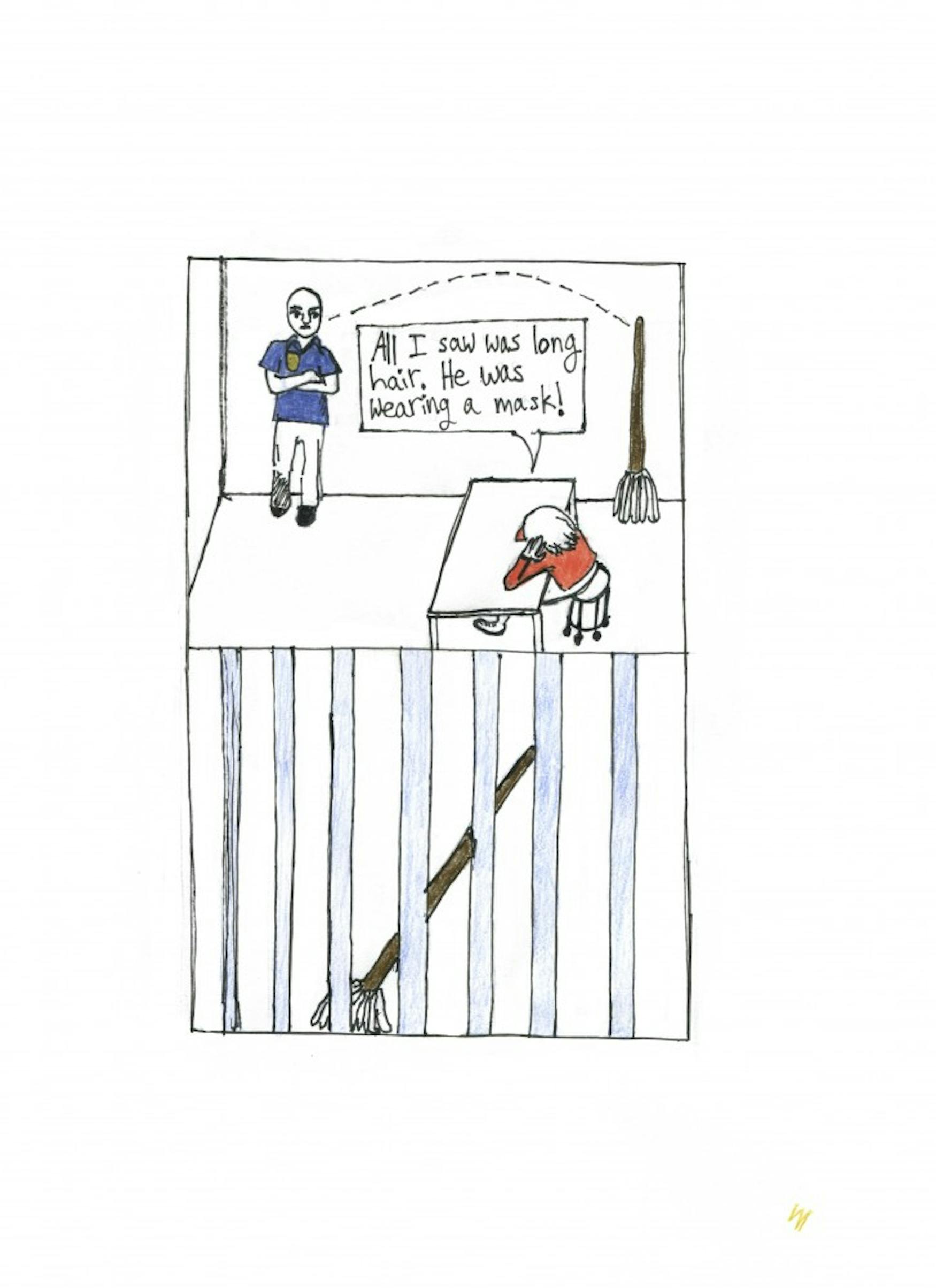Rethink the use of eyewitness testimony in criminal justice
In 1999, Richard Jones was falsely convicted of aggravated robbery after a woman’s cellphone was stolen in a parking lot. While there was no actual evidence placing Jones at the scene of the crime, his wrongful identification and subsequent arrest was the result of eyewitness testimony. Jones was the only person in a lineup who vaguely fit the description and “witnesses were presented with no other option but to choose Jones in the lineups created,” said lawyer Alice Craig, as quoted in an Aug. 30 New York Times article. According to the Innocence Project, eyewitness misidentification is the greatest cause of wrongful conviction in the United States; many of those convictions have been overturned with DNA testing. People instinctively may want to believe the victims of a crime and the truth of their story. However, this desire for justice may come at the expense of someone else’s life — false identification can permanently hurt someone.
Jones spent 17 years incarcerated before he was released, and he missed out on raising his daughters, now 19 and 24. However, even the horrible situation Jones was placed in was mild compared to those that were executed without concrete evidence that they committed the crime. The Death Penalty Information Center lists of 15 individuals who were convicted based on spotty evidence or coerced confessions.
Gary Graham’s case is similar to Jones’. Graham was charged with robbery and murder primarily on the eyewitness testimony of a woman who saw the killer, only briefly, from 30 feet away and through her car’s windshield. Two other eyewitnesses got a clear look at the suspect and denied that Graham was the perpetrator, but they were neither interviewed nor called to testify. In order to prevent the unjust execution or imprisonment of innocent people, there should be more measures taken to ensure that eyewitness accounts are as accurate as possible.
In the case of Jones, witnesses described the suspect differently with descriptions varying from light-skinned Black man to dark-skinned Hispanic man to tanned white man, according to the same Aug. 30 New York Times article. Clearly, that eyewitness accounts are not the most reliable form of identification. Yes, they are useful when first reporting a crime and can help give police an idea of who the suspect might be, but human memory is not perfect and the way that an event is recalled can vary from person to person. Aditionally, implicit biases exist, and these biases may also alter the way an event is perceived or remembered.
A 1975 paper in the Bulletin of the Psychonomic Society, “Eyewitness Identification: Effects of suggestion and bias in identification from photographs,” discusses this phenomenon. The paper describes a prior study involving two staged crime scenes and in both cases, 86 percent of witnesses made recall errors and were unable to accurately recall height, weight and age. Instead, the witnesses relied on published descriptions of suspects rather than what they actually observed. The paper also discusses the other reasons behind misidentification of individuals such as fear of looking foolish, reliance on police authority, stereotypes, social influence and conformity. In order to decrease the number of misidentifications and possible lives ruined, the Innocence Project has compiled a list of reforms that should be undertaken. These include double-blind administration of a police lineup so that officers cannot make any leading comments, compose a lineup of several individuals that match eyewitness’ description of the perpetrator or instruct the witness that the criminal may or may not be in the lineup — to reduce the amount of pressure on the witness and prevent them from making any hasty decisions. Additionally, the Innocence Project has pushed for the inclusion of a confidence statement in which the eyewitness discloses the level of confidence that they have in their identification of a suspect. Currently, 21 states have implemented some of these reforms. The adjustment of lineup composition is particularly interesting because when eyewitnesses were presented with mugshots of both Jones and Ricky Amos — the man believed by many to be the true perpetrator — witnesses said that they could no longer definitively say that Jones was guilty, according to an Aug. 31 CNN article.
A more reliable form of police identification is DNA testing and while not every crime scene makes that possible, it is much more reliable than eyewitness accounts and prevents the charging of innocents simply for having a doppelganger. Advances in DNA research have come a long way since it was first implemented, and today, biological material only the size of a pinhead is needed to identify a criminal, according to a Jan. 27 article in the New York Post. If a suspect was not previously convicted of a crime, their DNA will not be in the database and any searches will result in nothing. However, there is more experimental technology that allows police to search for a familial match in the system and build a family tree which helps police try to deduce who is a likely suspect. This, of course, is flawed and used “only when all reasonable leads have been exhausted,” according to Eric Rosenbaum, chief of DNA prosecution for the Queens District Attorney’s Office. There is also the possibility of using DNA to piece together information about the individual’s appearance, such as hair and eye color, so that police can create a basic image. This is still better than an eyewitness account because it reveals known, definitive characteristics of the suspect rather than what someone thinks they saw.
Richard Jones is only one of a long list of people who have been wrongfully convicted due to improper eyewitness accounts. While this practice does have its place in law enforcement, it is flawed and should not be used as the only basis of identifying possible criminals. Instead, more evidence-based and scientific routes should be explored rather than relying on the memory and supposed truthfulness of strangers.




Please note All comments are eligible for publication in The Justice.